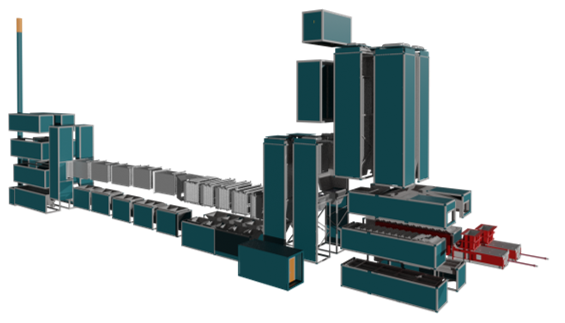Introducing the Modular wasteWOIMA20
The small-scale waste-to-energy market is gaining traction across Europe. Different markets have different drivers, such as industrial offtake schemes, local district heating networks and optimizing waste transportation. However, there is one common Europe-wide incentive for going small; the EU Emission Trading System (EU ETS) structure. And WOIMA has one Europe-wide solution to this opportunity; the wasteWOIMA20 WtE power plant.
The EU ETS (EU Emissions Trading system) is a cap and trade system, aimed with reducing the total GHG emissions from energy intensive industries. It covers over 11,000 installations across the EU which is equivalent to 45% of EU Emissions. Emissions are converted into tradable allowances, with the capped emissions reducing each year to provide an economic incentive for installations to decarbonize. To comply with the scheme, installations emissions must be monitored and reported annually, and enough allowances surrendered to cover their emissions.
On 14 July 2021, the European Commission adopted a series of legislative proposals setting out how it intends to achieve climate neutrality in the EU by 2050, including the intermediate target of an at least 55% net reduction in greenhouse gas emissions by 2030. The package proposes to revise several pieces of EU climate legislation, including the EU ETS, Effort Sharing Regulation, transport, and land use legislation, setting out in real terms the ways in which the Commission intends to reach EU climate targets under the European Green Deal. To achieve the EU’s overall greenhouse gas emissions reduction target for 2030, the sectors covered by the EU Emissions Trading System (EU ETS) must reduce their emissions by 43% compared to 2005 levels.
Allowances can be bought and traded on the carbon market; however, to reduce the risk of carbon leakage, some industries receive a portion of their allowances for free. Free allowances are allocated based on GHG performance benchmarks, determined by most efficient 10% of installations within that industry. Power generators have not received free allowances since 2013 and over the current Phase IV the proportion of free allowances for other sectors will decrease, in line with ambitious GHG reduction targets.
The inclusion criteria for ETS is stationary combustion activities with a combined thermal input capacity higher than 20 MW, made up of units larger than 3 MW. Once the 20 MWfuel threshold is achieved, all units are included in the site capacity and annual reporting. In other words, power generation facilities (sites) below 20 MWfuel power are, at least for the time being, exempted from the EU ETS.
This regulation creates a new niche market also for the waste-to-energy (WtE) sector. Traditionally, both the conventional power sector (coal, gas, peat, biomass etc.) and WtE market has been dominated by large units using hundreds of thousands to millions of tons of fuel annually with a power output well above 100 MW. The plant locations have depended on fuel logistics and/or off-taker capacity (electricity, district heating, industrial thermal…). The WtE plants have been built next to large cities with sufficient waste generation, or they have large collection areas. The economies of scale have also meant that the lower unit cost of large facilities has supported their profitability.

Several project developers, especially in France and the UK, are already working on this niche market. Since waste generation is local, it makes perfect sense to develop the small-scale local WtE plants tapping into the abundant fuel source with a negative price. This also complies with the spirit of the lates carbon emission regulation by limiting unnecessary waste transportation. The standardization of the wasteWOIMA® solution enables us to serve project developers with standard materials significantly speeding up the development phase.
Read more: wasteWOIMA20 The Modular Waste-to-Energy Power Plant
WOIMA Corporation is a Finnish supplier of best-in-class waste-to-value products, projects and services worldwide. We have developed solutions that enable us, and the customer, to transform and recycle virtually any waste stream into raw materials and energy. At WOIMA we combine Finnish engineering know-how in waste management with power generation design expertise. These solutions are used in Finland every day. They support the circular economy ideology and ensure that less than 1% of Finland’s waste ends up in landfills.
Our mission is to improve quality of life both locally and globally, as well as empower people to utilize waste as a commodity. Our decades of international project management experience ensure an on-time, in-budget and high-quality WOIMA solution delivery across the globe.







